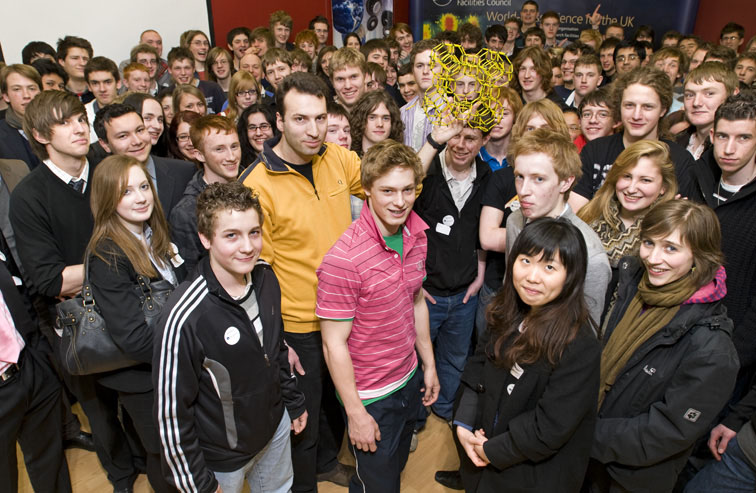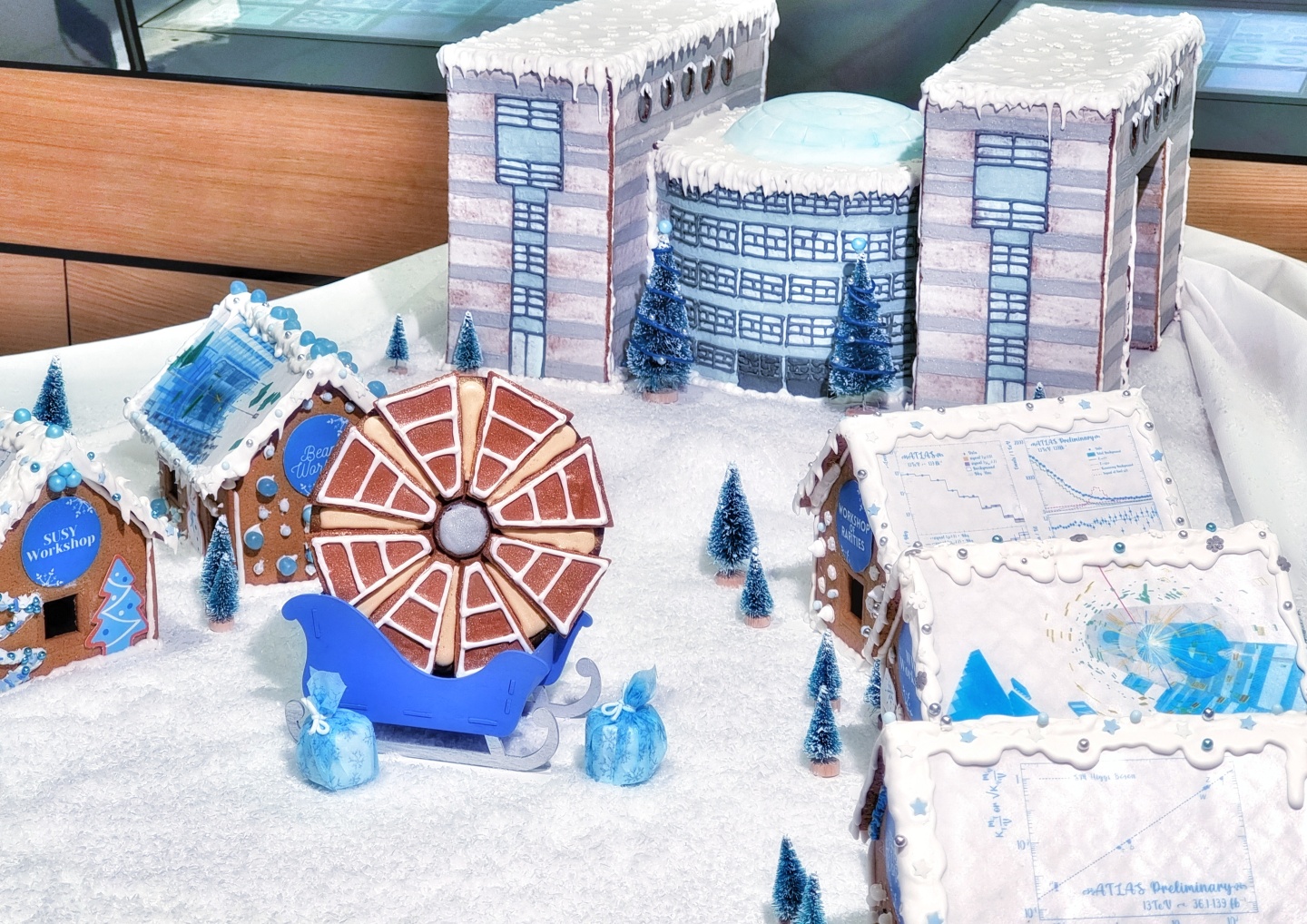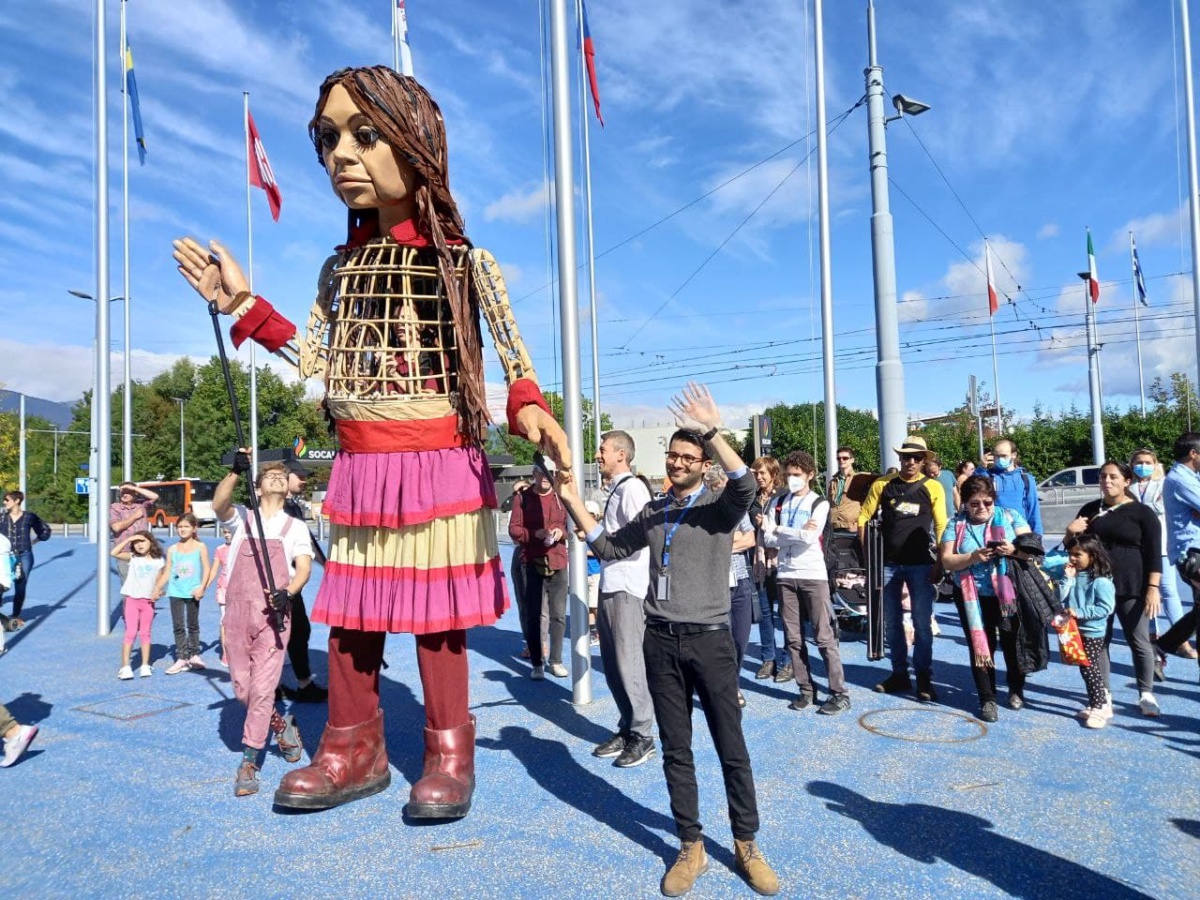Higgs finds the Higgs at RAL
1 April 2009 | By

On Friday, March 13th, British high school student Jonathan Higgs discovered the elusive Higgs boson among the simulated particle tracks in Minerva – a special form of ATLAS’ event display program, Atlantis, designed for students in the International Particle Physics Masterclasses. While he didn’t earn a Nobel Prize for his find students who performed well won t-shirts, decks of cards, and other rewards.
Michael Kobel, one of the physicists who extended the program across Europe, describes his motivation: “Students should come as early as possible in contact with the fundamental questions about our universe, get their hands on real data, come in contact with scientists, and experience how fascinating physics can be.”
One of the British masterclasses was held at Rutherford Appleton Laboratory; they hosted a total of 500 students in three one-day programs from March 11th to 13th. It is one of the oldest sites for the program, starting up just a year after the first masterclasses were held in the UK in 1997. The rest of Europe got in on the fun in 2005, a special effort by the European Particle Physics Outreach Group for the World Year of Physics. The program was so successful that it continued the next year, incorporating the US’s QuarkNet, a program with similar aims to connect high school students with real particle physics data.
In 2009, the International Particle Physics Masterclasses are held in most European countries, 13 US states, Brazil, and South Africa. Perhaps the most telling evidence of its success is the fact that enrolment has doubled from 3000 to 6000 since 2005. About half of the day is spent in lectures, learning all the basics of particle physics that the students will need when they are let loose with computer programs that allow them to analyse data from CERN. While events like Jonathan’s Higgs are from simulations of particle events in ATLAS, they will be replaced by real events when the LHC turns on.
At the end of the day, students in many locations engage in video conferences using the California Institute of Technology’s EVO system, the same program that many CERN physicists use to communicate with one another, from all over the world. It is an intense program, but 82 per cent of students report that they enjoyed their day as a particle physicist. And with just four per cent finding the material too easy or too difficult, the instructors have managed to pitch the challenging material at just the right level.
Glenn Patrick, a RAL physicist involved with the program, says: “Over 70 per cent of the students from the first day said that they were more likely to consider a career in physics or science as a result of this event.”



